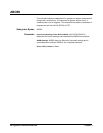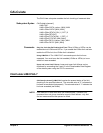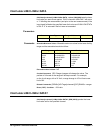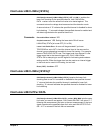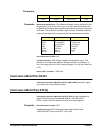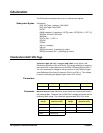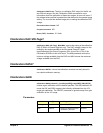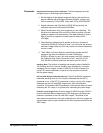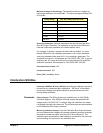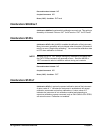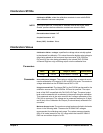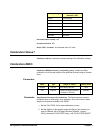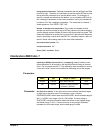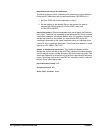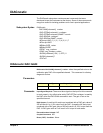
56 Digitizers Command Reference Chapter 3
Comments Steps Before Executing a Gain Calibration: The following steps must be
completed prior to executing a gain calibration:
1 Set the digitizer to the desired range and filter on the channel you
want to calibrate with VOLTage[<channel>]:RANGe <range> and
INPut[<channel>]:FILTer:FREQ <freq> and :FILTer:STATe ON|OFF.
2 Enable calibration with CALibration:STATe ON and specify the
calibration source with CALibration:SOURce.
3 Specify a calibration value for the channel you are calibrating. The
value must be between 85% and 98% of either a positive full scale
reading or negative full scale reading. The ideal calibration value is
98% of positive or negative full scale (see CALibration:DAC:
VOLTage).
4 The calibration voltage must be applied to the input connector if
CALibration:SOURce EXTernal is used. You must enter the external
calibrator voltage value with CAL:VALue when an external calibration
source is used.
5 The E1564A 4-Channel Digitizer automatically applies the DAC
voltage to the internal calibration bus when CALibration:
SOURce INTernal is used. You must measure the DAC voltage at
the Calibration Bus Output Connectors (CAL-L and CAL-H) (for
CAL:SOURce INTernal) and enter that value with CAL:VALue.
Sampling Rate: The number of readings and sampling rate will default to
100 readings and 0.001 second sampling rate, respectively, to provide
averaging over an integral number of either 50 Hz or 60 Hz power line
cycles. This allows calibration to cancel out any noise that is periodic
with the power supply.
64V and 256V Ranges Calibrated Indirectly: The 64V and 256V ranges are
calibrated indirectly when the 16V range is calibrated and the ON (1)
parameter is set. If the OFF (0) parameter is active, only the 16V range is
calibrated and the 64V and 256V ranges retain their old calibration
constants. This boolean ON/OFF parameter is checked and used only when
calibrating the 16V range. It is ignored when calibrating any other range.
Calibrate Lower Ranges First: All lower ranges (0.0625V through 4.0000V)
must be calibrated before calibrating the 16V range and calculating new
calibration constants for the 64V and 256V ranges. The effects of the
attenuators and amplifiers on the gain calibrations for the lower ranges are
extrapolated to derive a gain constant for the 64V range and another for the
256V range.



